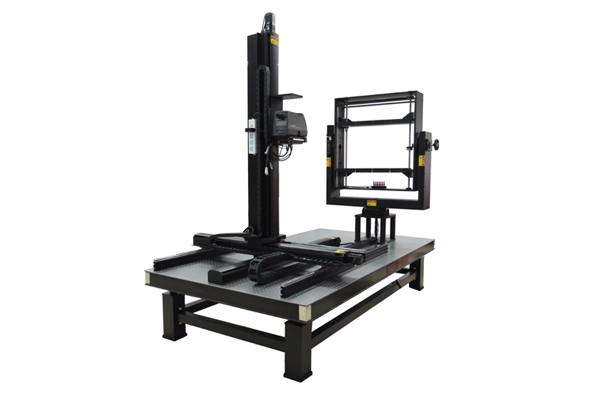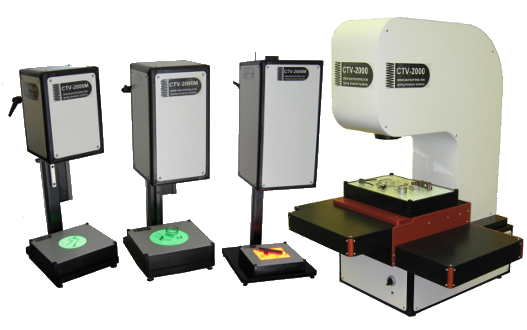The Role of Optical Dimension Solutions beforehand Metrology Strategies
Optical measurement systems have changed metrology, bringing a degree of accuracy that was when inconceivable. As you discover even more, you'll uncover how these systems are shaping the future of dimension and quality control.
The Advancement of Metrology: A Historical Viewpoint
As you explore the history of width, you'll find that its development shows mankind's quest for precision and standardization. From old civilizations making use of body parts as devices of dimension to the development of standard weights and actions, each step reveals our desire for accuracy. The Egyptians developed the pyramids making use of precise measurements, while the Romans advanced engineering with their innovative measuring devices.
During the Renaissance, scientific developments changed the emphasis towards more empirical methods, paving the method for modern-day width. The introduction of the metric system in the late 18th century marked a significant turning point, developing global criteria. Throughout the 20th century, technical innovations further transformed metrology, enabling highly accurate dimensions in different areas.
Today, width remains to evolve, integrating digital technology and automation. This history highlights not just the significance of measurement yet additionally our unrelenting search of boosting precision and uniformity in our progressively complicated world.
Principles of Optical Dimension Equipments
Recognizing the concepts behind optical measurement systems is vital for precise cause metrology. You'll desire to consider essential optical principles, measurement precision aspects, and efficient system calibration techniques. Each of these elements plays a vital duty in ensuring your measurements are trusted and precise.
Fundamental Optical Concepts
While checking out optical measurement systems, you'll run into essential optical principles that create the foundation of accurate information purchase. Light acts in predictable ways, and recognizing these habits-- like refraction, reflection, and diffraction-- is important for effective dimensions. You'll use lenses and mirrors to manipulate light and concentrate it onto your target, making sure precision in your analyses. Additionally, the wave nature of light enables interference patterns, which can boost measurement resolution. Polarization can additionally play an essential duty in distinguishing signal from sound, improving the quality of your results. By grasping these concepts, you'll be furnished to take advantage of optical technologies successfully, paving the method for innovations in assessment and guaranteeing your dimensions are both reputable and repeatable.
Dimension Precision Factors
To achieve high measurement precision in optical systems, a number of factors enter into play, influencing the dependability of your outcomes. First, the high quality of the optical elements matters considerably. High-quality lenses and detectors decrease aberrations and noise, ensuring your dimensions are specific. Second, ecological problems like temperature and humidity can affect dimensions, so keeping a secure atmosphere is vital. Third, the positioning of the optical system is vital; even minor imbalances can cause considerable errors. Finally, the wavelength of light made use of influences the resolution and accuracy of your measurements. By resolving these aspects, you can improve the overall efficiency of your optical dimension systems, causing more exact and trustworthy lead to your assessment applications.
System Calibration Techniques
Attaining high measurement precision is only part of the equation; correct system calibration strategies are equally essential in optical measurement systems. Next, employ recognized measurements to confirm the system's outcome and make required adjustments. With these strategies, you'll improve the reliability of your optical dimension system.
Trick Technologies Behind Optical Measurement
Optical dimension systems rely upon numerous vital modern technologies that boost precision and efficiency in width. One essential modern technology is interferometry, which uses the interference of light waves to determine tiny variations and surface abnormalities with extreme accuracy. You'll also locate laser scanning systems, which capture thorough 3D information of things promptly, making them invaluable for dimensional analysis.
In Addition, CCD and CMOS sensing units play a considerable role in converting light right into electrical signals, permitting high-resolution imaging and specific measurements. Advanced algorithms for image handling better boost dimension precision by examining information in real time, straining noise and enhancing features.
Finally, fiber optics provide flexibility and the capacity to measure in challenging environments while maintaining signal integrity. By leveraging these innovations, you can achieve remarkable cause your metrology jobs, making certain that your dimensions are both reputable and exact.
Applications of Optical Measurement in Sector
As sectors increasingly require accuracy and efficiency, the applications of optical measurement systems have become vital throughout different markets. In production, these systems aid you check dimensions and tolerances in real-time, guaranteeing quality assurance without lengthy manual checks. In the automobile industry, optical dimensions assist in lining up parts with accuracy, enhancing safety and security and efficiency.
In electronics, you're making use of optical techniques to examine minute attributes on circuit card, detecting flaws that can bring about failures. The aerospace industry gain from non-destructive testing methods, enabling you to assess materials and components without endangering their honesty.
Optical measurement additionally plays an important function in fabrics, guaranteeing material measurements fulfill exact specifications. optical measurement systems. With their capability to supply high-resolution data rapidly, these systems encourage you to make informed decisions, enhance processes, and inevitably drive development across your sector
Enhancing Accuracy and Effectiveness in Measurements
When you think of enhancing precision in dimensions, accuracy in your dimension methods is essential. By streamlining these procedures, you can achieve quicker outcomes without compromising top quality. Let's discover exactly how adopting innovative optical measurement systems can elevate both precision and efficiency in your work.
Precision in Dimension Techniques
Accuracy in dimension methods is crucial for accomplishing trusted outcomes in assessment, especially given that tiny discrepancies can bring about substantial mistakes. By using innovative optical measurement systems, you can boost the precision of your dimensions. These systems provide high-resolution information that aid you spot also the tiniest variations in dimensions. When you adopt these innovations, you decrease unpredictabilities and improve repeatability in your procedures. In addition, precise dimensions allow you to keep top quality control, making sure that items meet stringent specifications. This not just enhances your reliability yet also boosts client contentment. Spending in accuracy measurement devices ultimately brings about enhanced effectiveness, minimized waste, and maximized production cycles. Accepting these methods will change your technique to metrology, producing amazing results.
Simplifying Dimension Procedures
To boost precision and effectiveness in dimensions, improving your measurement procedures is essential. Start by taking on optical dimension systems that provide real-time information, reducing the moment spent on hand-operated recording. These systems often incorporate flawlessly with existing software program, allowing you to automate data collection and analysis.
Following, standardize your measurement procedures. By executing regular procedures, you lessen variability and enhance repeatability. Don't fail to remember to regularly calibrate your tools to guarantee its precision.

The Effect of Optical Dimension on Research Study and Advancement
As researchers venture to press the limits of technology, optical measurement systems have become crucial tools in the growth procedure. These systems give you with precise, real-time information that enhances your ability to evaluate complex materials and structures. In different fields, from biotechnology to aerospace, you count on optical dimensions to optimize designs and improve item efficiency.

With high-resolution imaging and non-contact methods, you can lessen example disruption, permitting more exact results. This capacity to record minute information accelerates your R&D cycle, letting you repeat layouts quickly and effectively. Optical measurement cultivates partnership throughout disciplines, as the data optical measurement system generated is often conveniently interpretable and shareable.
Inevitably, incorporating optical measurement systems right into your research not only improves efficiency however likewise deepens your understanding of the phenomena you research. By leveraging these advanced strategies, you're better equipped to innovate and stay in advance in a competitive landscape.
Future Patterns in Optical Dimension Systems
With the quick development of modern technology, you're likely to see substantial changes in optical measurement systems that will certainly redefine their application throughout numerous industries. You'll discover an action towards boosted automation and integration of expert system, permitting for real-time information evaluation and improved accuracy. Miniaturization is an additional fad; compact gadgets will allow measurements in tighter rooms, making them perfect for areas like aerospace and biomedical applications.
Additionally, the introduction of sophisticated materials, such as photonic crystals, will boost level of sensitivity and resolution. Anticipate to see systems that can operate in difficult atmospheres, providing dependable dimensions in severe problems. Cloud-based analytics will additionally play an essential function, supplying you accessibility to big datasets for far better decision-making. As these technologies assemble, you'll find that optical measurement systems not just enhance accuracy but likewise simplify process, inevitably driving development and efficiency in your projects.
Regularly Asked Inquiries
Just How Do Optical Measurement Solutions Contrast to Typical Measurement Techniques?
Optical measurement systems offer higher accuracy and faster results compared to conventional strategies. You'll locate they catch even more information points accurately, minimizing human error and raising reliability, making them a preferred option in various applications.
What Industries Benefit The Majority Of From Optical Measurement Equipments?
You'll discover markets such as aerospace, automobile, and electronic devices profit most from optical measurement systems. These fields count on exact dimensions to guarantee quality and performance, improving performance and minimizing costs via sophisticated innovation.

Are Optical Dimension Equipments Expensive to Implement?
Optical measurement systems can be costly to apply, yet their precision and effectiveness commonly warrant the expense. Purchasing such technology can result in significant lasting cost savings and renovations in high quality throughout numerous applications.
What Abilities Are Required to Run Optical Measurement Solutions?
To operate optical measurement systems, you'll require solid analytical abilities, focus to detail, and proficiency in software program tools. Knowledge with optics and an understanding of dimension principles will certainly likewise improve your effectiveness and efficiency.
How Do Environmental Elements Affect Optical Measurements?
Ecological aspects like air, moisture, and temperature level quality can distort optical measurements. You'll see variants in precision because of light interference or refraction. optical measurement systems. Maintaining steady conditions is crucial for reliable and exact optical dimension outcomes
Verdict
In summary, optical dimension systems are reinventing metrology by providing unrivaled precision and efficiency. By using sophisticated principles and modern technologies, these systems enhance accuracy while lessening disturbances in numerous industries. As you discover future fads, you'll see exactly how the assimilation of AI and automation will remain to boost measurement methods, driving technology and boosting quality assurance. Embracing these innovations will be important for staying affordable and achieving excellence in your area.
Achieving high dimension precision is only component of the formula; proper system calibration strategies are just as essential in optical dimension systems.When you believe about boosting precision in measurements, accuracy in your measurement methods is necessary. By utilizing advanced optical dimension systems, you can boost the accuracy of your dimensions.To improve precision and performance in dimensions, improving your dimension procedures is vital. Just How Do Optical Measurement Solutions Compare to Conventional Dimension Techniques?